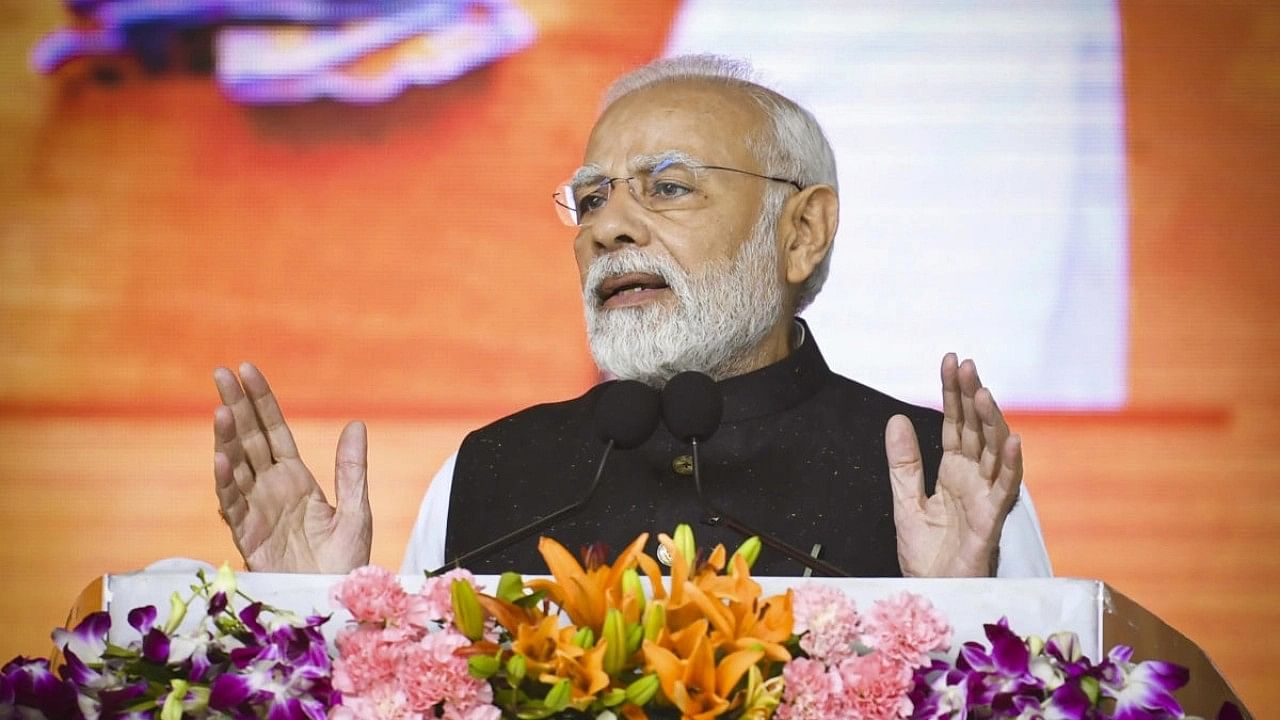
Prime Minister Narendra Modi.
Credit: PTI Photo
By Pankaj Mishra for Bloomberg
India is, suddenly, Bharat, and it could be asked, as Shakespeare wrote, what’s in a name? But Prime Minister Narendra Modi, who embraced the Sanskrit name for his country in the same week that he played lavish host to the G-20 summit in New Delhi, is trying hard to project India as a “vishwaguru” (guru to the world). It is time to examine his claims more closely, and also to see the present and the future of his “New India” without comforting illusions.
Take, for instance, the booklet, “Bharat, the Mother of Democracy,” presented by Modi’s government to visiting dignitaries at the G-20. According to it, ancient Hindu sages and kings were partisans of equality, inclusivity, and harmony. Even modern feminism was anticipated by the 5,000-year-old bronze statue of an “independent and liberated” dancing girl.
Such claims are part of an elaborate narrative that is decisively shaping the outlook of many Indians today — one in which a once-dynamic Hindu civilization was ravaged by vicious Muslims and exploitative Westerners.
In Modi’s own account, Hindus were enslaved by Muslim invaders for 750 years and then for an additional 250 years by white British colonialists — a version of history used in India today to justify the degradation of Muslim and Christian minorities, the destruction of mosques and British-built buildings, the purging of textbooks, and now the unofficial renaming of India.
Modi’s own popularity, unconnected to his party’s variable fortunes, stems from what is a potent promise in a country full of humiliated peoples: to destroy the corrupt old political order and, as he put it in his Independence Day speech last month, to ensure a fully modernized New India enjoys a “golden” period “for the next 1,000 years.”
Such millenarian bombast — also echoed in the speeches of Vladimir Putin and Xi Jinping — belongs to a longer tradition of anti-Western demagogues proclaiming themselves heirs to distinguished ancient civilizations, including the Germans and Italians who sought to build the Thousand-Year Reich and the Third Rome, respectively.
It is a common mistake to suppose that German and Italians Fascists rejected modernity in favor of an idealized past. On the contrary, they pursued, often with help of Western nations they derided as “decadent,” ultra-modern technologies, modernist architectural plans, advanced transport systems and awesome public works. Like Hindu nationalists today, they used mass media, sporting events, and scientific breakthroughs to raise the pitch of collective emotion and project the image of a united and resurgent people.
Of course, since technological and military power still clearly lay with Britain, France and the US, the peoples failing to catch up with the West tried to feel superior to it in the realm of culture and philosophy. Invoking their great ethnic or racial past even as they sought grandiosely to supervise the future of the modern world, they became exemplars of what the American historian Jeffrey Herf has called “reactionary modernism.”
Presenting ancient Indians as pioneering democrats and feminists (also, the world’s earliest plastic surgeons), Modi belongs to this extended family of catch-up nationalists. His nation, too, seeks to blend neo-traditionalism with modernization while measuring itself, with volatile feelings of insecurity and resentment, against a weakened but still superior West.
It is no accident that Modi is a lifelong member of the Rashtriya Swayamsevak Sangh (RSS), an organization that has, since the 1920s, deliberately modeled itself on the organizational structures and propaganda modes of anti-Western authoritarians. Moreover, nine years of BJP rule have confirmed that Hindu nationalists seek to remake Indian society as a forceful civilizational repudiation of Islam and the West.
This won’t change. Those hoping to recruit Modi’s Bharat as a Western ally should consider the plain historical fact that, as the scholar Nirad Chaudhuri wrote in 1954, the most ineradicable aspect of Hindu nationalism is “xenophobia, both personal and ideological.” The sentiment may be muted “when and where the military and political strength of the foreigner” is overwhelming but nevertheless thrives on an “incessant campaign of slander and denigration.”
Thus, there was nothing extraordinary about an Indian official effectively taunting Western countries on X, formerly known as Twitter, for the G-20’s failure to condemn Russia’s assault on Ukraine. Sweeping denunciations of the West as selfish and arrogant, deserving of a comeuppance, are now routine in India. More remarkably, as Modi’s ministerial colleagues as well as social media trolls go after George Soros, India is openly participating, for the first time in its long history, in the global networks of anti-Semitism.
Certainly, neither of the two main commonplaces about the world’s most populous nation — that it is a rising, vibrant democracy or that it is descending into authoritarianism — will seem adequate in the treacherous months and years ahead. More historically grounded analyses will be needed as yet another batch of reactionary modernists rises in the east.